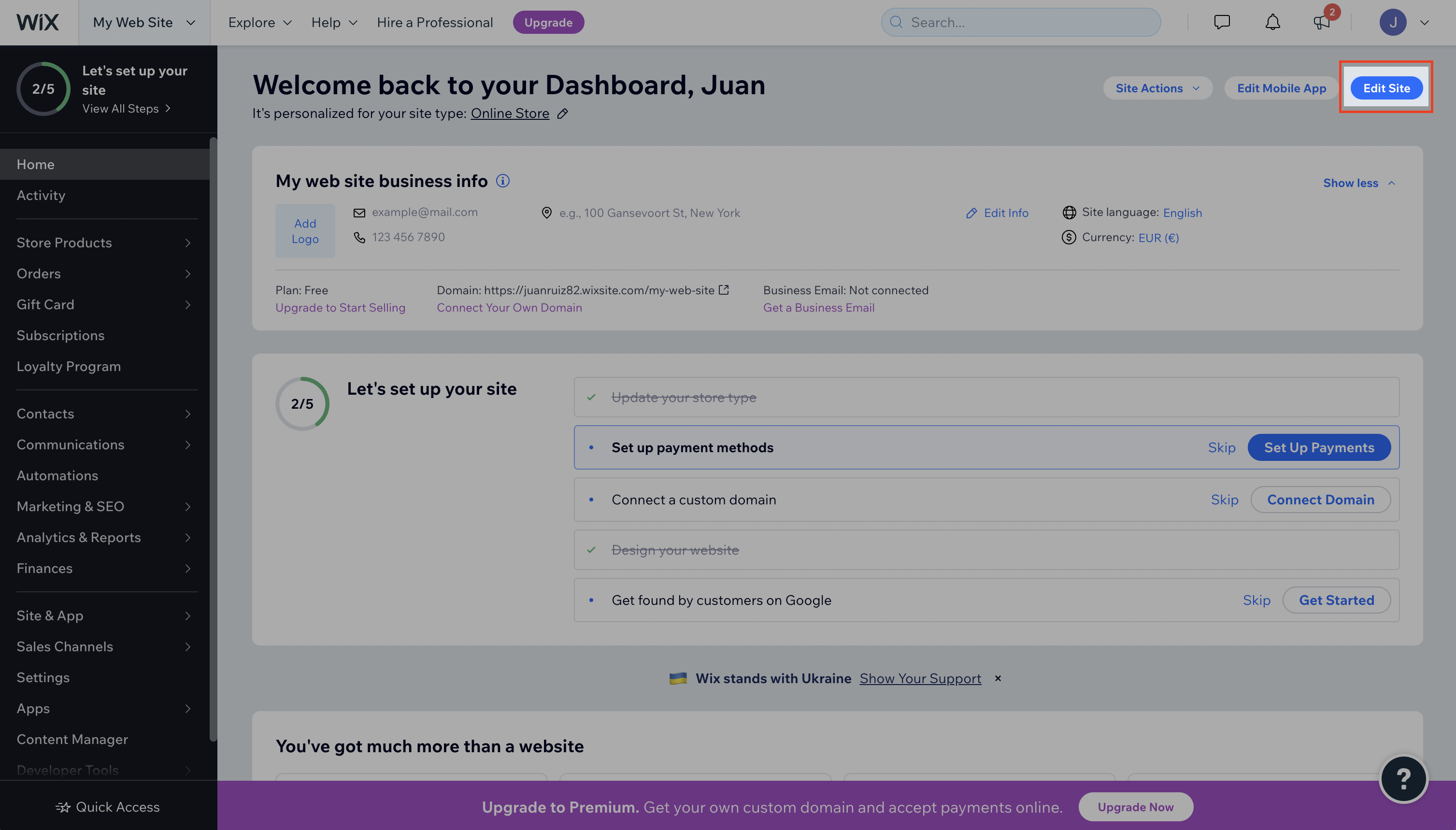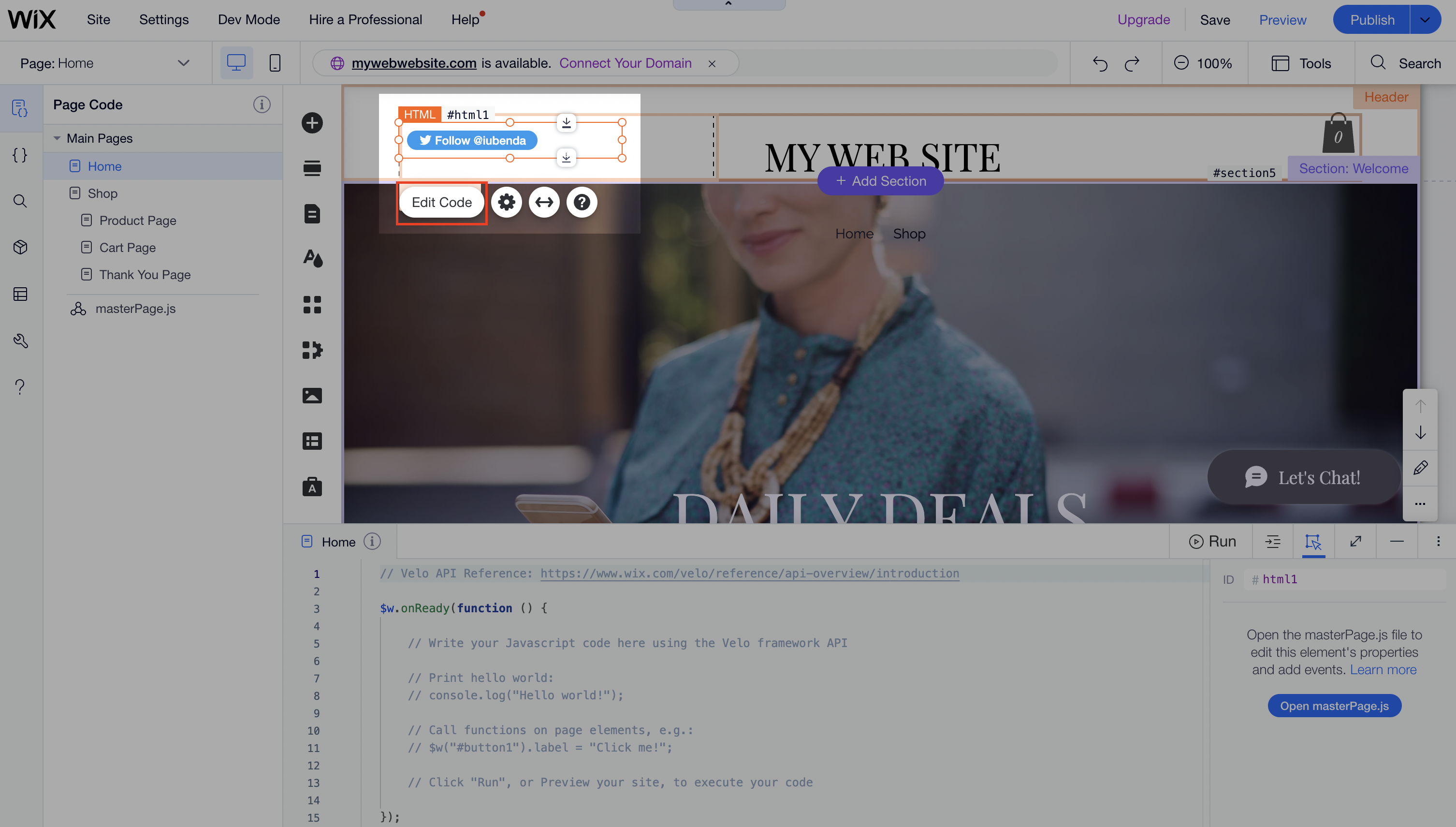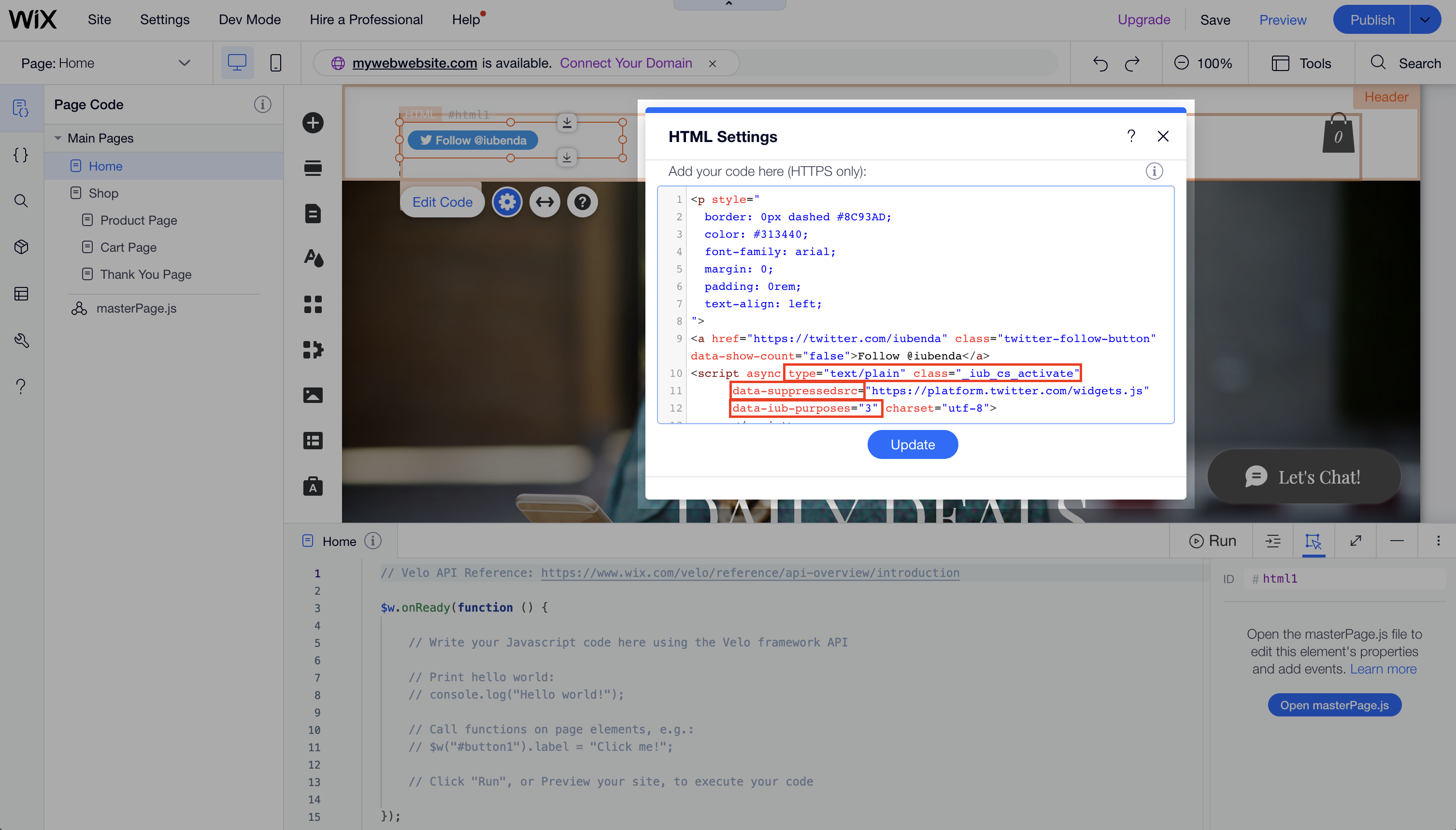Cookies are small pieces of data stored on a site visitor’s browser. They are typically used to keep track of the settings users have selected and actions they have taken on a site.
In accordance with the Cookie Law, if you operate in the EU (or could potentially have EU users) and you’re using cookies on your site, you must:
On the Cookies and Your Wix Site guide, Wix invites you to consider adding a third-party tool to notify your site visitors of cookies, since their Cookie Alert App only alerts your site visitors of cookies placed on their browsers, and it doesn’t address all Cookie Law requirements (like the prior blocking).
Here’s where our Privacy Controls and Cookie Solution comes in very handy: it allows you to display a fully customizable cookie banner, collect cookie consent, implement prior blocking and more. It’s easy to run, fast and free up to 25k pageviews/month.
To install the Privacy Controls and Cookie Solution you’ll need to edit the HEAD of your site, a Wix premium feature available only on their paid plan.

HEAD tag of your pages as the first element (learn more about embedding custom code on Wix) and you’re done!
This above is an example of a cookie banner created with our Privacy Controls and Cookie Solution. Remember that cookie notices are just one part of the requirements: in order to be fully compliant, you must also link to an accurate cookie policy and block cookies prior to consent.
Few categories of cookies are exempt from the consent requirement. Therefore, you’ll need to block scripts from running until you get valid user consent.
Did you know that there’s a simpler option available for the prior blocking of cookies and trackers? Our auto-blocking feature automates the process, saving you time and effort.
If you prefer to manually tag your scripts that install or may install cookies, you can still follow the process below for step-by-step instructions and practical examples. However, we highly recommend considering the auto-blocking feature for a more streamlined approach.
👉 Click here to learn more about auto-blocking and how it can simplify your cookie-blocking process
Manual tagging is the method of prior-block we’ll be using for the tutorial below. You can view other methods here.
To set up prior blocking, you’ll need to make some minor changes to your site’s scripts. But it’s simple; just do the following:
In this tutorial, we are going to block a Twitter follow button.
💡 Not sure which services you need to block? If you’re using a Cookie Policy generated by iubenda, the services listed in your Cookie Policy are most likely the ones you need to modify now.
In your Wix dashboard, click on Edit Site

Then, open your Page Code tab to find the script you need to modify (simply search for the service you want to block, in this case, it is the Twitter follow button) and then click Edit Code to open the code editor.

_iub_cs_activate to the script tags, and change the “type” attribute from text/javascript → text/plain
data-suppressedsrc or suppressedsrc
data-iub-purposes attribute, e.g. data-iub-purposes="2" or data-iub-purposes="2, 3"
Purposes are your legal reasons for processing the particular type of user data. Different scripts on your site will fall into different categories and serve different purposes. For example, Google Analytics may be used for Measurement, while the Pinterest button may be used for Experience (Purpose 3 below). Purposes are grouped into 5 categories each with an id (1, 2, 3, 4, and 5):
1)2)3)4)5)For even more detailed info on categories and purposes, see our guide here.
Let’s take the Twitter follow button as an example:
We need to 1. Add the class and change the “type” attribute, 2. replace the src and 3. specify the categories.
And the code structure should be like this:

<p>Twitter follow button:</p>
<!-- please note type="text/plain" class="_iub_cs_activate" data-suppressedsrc="..." (manual tagging) and data-iub-purposes="3" (per-category consent) -->
<a href="https://twitter.com/iubenda" class="twitter-follow-button" data-show-count="false">Follow @iubenda</a>
<script async type="text/plain" class="_iub_cs_activate" data-suppressedsrc="https://platform.twitter.com/widgets.js" data-iub-purposes="3" charset="utf-8"></script>Not sure if you’ve set up correctly? Check out the live example and FAQs below
This is an example that shows everything we have described above, you can use this code pen as a guide to see what happens before and after blocking scripts via manual tagging.
To demonstrate the cookie blocking feature, we’ve embedded a YouTube video, and a Twitter follow button:
Follow @iubenda
Both scripts are blocked through manual tagging. Since both the YouTube video widget and the Twitter follow button are part of the Experience purpose (id 3) we’ve added data-iub-purposes="3" to their scripts so that the Privacy Controls and Cookie Solution can properly identify them for release.
Click on the Accept button – or just activate the “Experience” toggle – to release these scripts (refresh the page to return to the starting point).
As you can see in the code pen example, the Youtube and Twitter scripts do not load if you do not consent. (You can test this function again by opening this link (https://codepen.io/iubenda/pen/KKKxmVO/?editors=1000) in incognito mode in your browser)
After you have saved, open your site in an incognito mode and check if the scripts you have blocked via manual tagging stay blocked until you consent.
Please refer to this dedicated article if you’d like to know how to block cookies before consent using other options available. ➔ Take a look at Google Consent Mode as an alternative to prior blocking, Google Tag Manager to Simplify the Blocking of Cookies, or the IAB Transparency & Consent Framework and how to enable it.